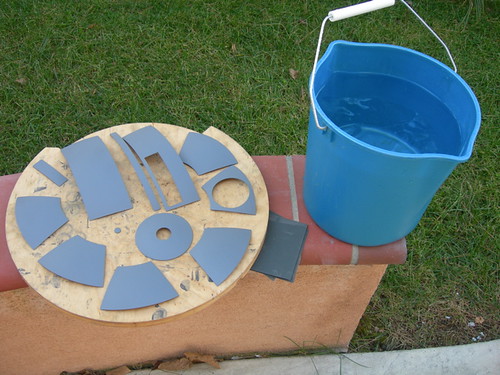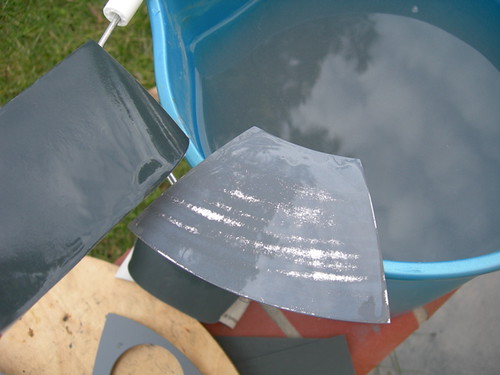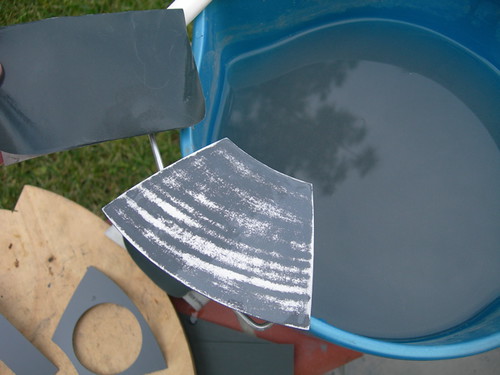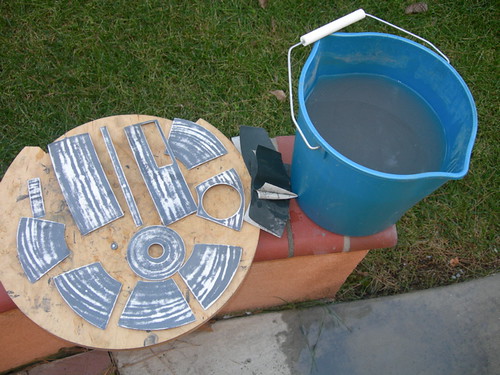
I took a sheet of 400-grit wet/dry sandpaper, and divided it into four pieces. To wet-sand, I simply dunk the paper and the panel piece into the bucket of water, and lightly sand across the grain of the aluminum.

There is a layer of white primer beneath the gray primer. As I sand, the spin lines start to materialize. The gray primer stays in the valleys, while the white primer appears at the peaks. The longer I sand, the more the peaks and valleys emerge, resulting in a smooth surface.

After a couple of hours and a handful of freezing fingers, I had finished wet-sanding.

Next up, a final coat of white primer, in preparation for painting.

No comments:
Post a Comment